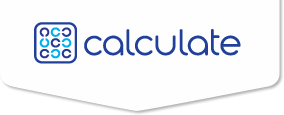From Enrollment Professional to Parent: My New Insights into the College Search Process

- I’ve been through it before
- My husband and I both work in higher education, and
- This particular child is a go-getter and did most of the work herself
Yet, the enormity of the decision (and the huge list of tasks) reminded me of just how arduous a process this is for students and families. My husband and I let our daughter take the lead while we stayed in close contact, accompanied her on visits, and completed countless forms.
In most ways, “Ophelia” is a typical college-bound student. Her approach to college search reflects what the national research and data shows about the behaviors and expectations of her peer group.
Over the past year, I observed her process and asked tons of questions — basically mining her perspective. While this in no way represents a study, I was intrigued enough by the consistency between her experience and the research to share the following observations:
Shopping for colleges in a market rich with options
Ophelia approached her college search like a mindful consumer — she began by collecting data in order to make the best possible purchase. I know, I know … we cringe at the thought of higher education being reduced to a commodity, but from the student/family perspective it is one of life’s greatest purchases — in a market rich with options.
Ophelia spoke to herkey influencers, those whose perspectives she valued: parents, friends, guidance counselors, and favorite teachers. She sought their opinions, asking what each knew or thought about a particular institution. And she listened. I know this because my husband and I disagreed on the value of one university: I wanted her to consider it and he did not. Well, he got to her first and she wouldn’t budge (influencers do, indeed, influence).
“I have no patience for bad websites.”
Like her peers, Ophelia’s next step centered on digital research. She went to the website of each school on her list searching for answers to a few specific questions. In particular, she wanted to find:
- Her desired major and its curriculum
- Cost of attending and financial aid
- Next steps in the application process
- Student testimonials
Note that her list is fairly short. Many (most, really) higher ed websites are overloaded with nonessential information. This is where we have a true disconnect between students and institutions.
Ophelia and her peers have a clear expectation of how a website should deliver information. They are digital natives and have never known dial up internet or slow page loads. They also expect a clean, easy-to-follow navigation. “All colleges have the same basic format like Admissions, Academics, and stuff,” Ophelia said. “The problem is the sub navigation when you can’t find things or they don’t come up in their own search. I have no patience for bad websites.”
Print still works (once they’re hooked)
While she threw out 90% of the material that came to the house, she kept and read everything related to the institutions on her short list. From Ophelia’s perspective: “I didn’t ask for most of the stuff I got– it came from colleges I wasn’t interested in.”
I pleaded with her to at least look through the unsolicited materials, but after a while I gave up. The volume was simply too much. From her perspective: “They send me information about majors I have no interest in – they don’t even know who I am or what I want.”
Personalization … up to a point
Which brings us to the point of personalization. All data shows us that prospective students want to be known — up to a point. They definitely expect the institutions to know their names and areas of academic interest, but this is a savvy generation and they don’t fall for overt marketing.
One day Ophelia tossed me a post card that had her name spelled out in skywriting. “How lame is that?” she said. I actually thought it was kind of nice, which I why I advocate for peer appropriate focus groups (turns out there’s a huge difference between the likes of middle aged administrators and college bound students!).
Ophelia’s perspective was that it was an obvious and desperate ploy for her attention: “I don’t mind if they use my name in a letter or email, but this is a bit much.”
Student voices & campus visits
So what works best? Turns out, a variety of strategies, but perhaps the most consistently effective are peer voices and campus visits. The former can be a simple testimonial, video, or part of a targeted communication plan, but the pieces need to be honest, authentic, and abundant.
Like her peers, Ophelia trusts other students, seeing them as “more honest” than institutional messages. “I don’t know,” she said, “There’s something about seeing a bunch of students who are already there and hearing about what it’s like. I just trust them more … unless it sounds like they’re not using their own words.”
And of course, there’s nothing better than the campus visit to give prospects the opportunity to meet current students and to experience the campus environment firsthand. Ophelia’s final decision came down to several factors, but none had greater importance than talking to current students and then seeing the campus in action.
Those who work in higher ed have no doubt heard countless students say, “Once I stepped on campus, I just knew it was the right place.” For parents and professionals, there’s no greater sentiment.

